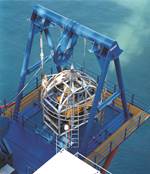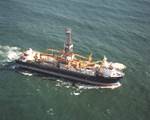1973 Oil Embargo
Although production in areas such as the Gulf of Mexico, Latin America, and the North Sea continued to increase, it was assumed that the Middle East would continue to supply the bulk of the world’s oil. The vast fields of easily recoverable reserves made this region the obvious source for energy until the oil
Share
Read Next
Although production in areas such as the Gulf of Mexico, Latin America, and the North Sea continued to increase, it was assumed that the Middle East would continue to supply the bulk of the world’s oil. The vast fields of easily recoverable reserves made this region the obvious source for energy until the oil embargo of 1973.
This political event, driven by the Yom Kippur War between Syria and Egypt over the land lost to Israel in the 1967 conflict, created the first worldwide oil shortage since World War II. The Arab nations of the Middle East agreed to cut back production in sympathy with Egypt and forced the West into an oil renascence. Suppliers anticipated not only a short-term increase in demand, but a long-term strategic advantage to producing oil domestically rather that relying on imports.
When oil prices shot up, offshore exploration quickly followed. As onshelf leases reached record levels exploration ramped up off the continental shelf and drilling depths surpassed 1,000 ft/308m. Hot spot seismic was enhancing exploration and new designs such as tension leg platforms (TLPs) and compliant towers were being tested in the U.S. Petrobras installed its first floating production system in 1977. In addition to new surface structures, the industry was making its first foray into subsea completions. By 1979, there were 140 subsea completions in place worldwide, which led to the development of specialized construction vessels for offshore work such as ROVs.
In 1979, the Iranian revolution and the following invasion of Iran by Iraq in 1980 once again drove down production and increased prices. The oil industry rode the wave of Middle Eastern curtailment by exploring and developing more and more prospects. During this period a number of key technological developments came about, including the first horizontal well in 1981. In 1984, the Norton Christensen TLP was installed in the Gulf of Mexico by Conoco and, in 1986, Apache drilled to the record depth of 25,000 ft/7,690m. By 1984 the mobile offshore drilling unit (MODU) fleet peaked at 603 units.
But in the mid-1980s, the Saudis decided to increase production to previous levels and caught the U.S. oil industry off guard. Prices dropped rapidly and the “oil patch” dried up. Across the Atlantic, the impact was not felt as hard because the offshore industry was tightly regulated by the government and production rates were limited. Almost overnight, leases were returned to the U.S. government and drilling programs were drastically cut back. By 1989, the number of platforms being removed from the Gulf of Mexico outpaced the number of new platforms going in. Yet, even during this period, there were several major milestone projects that continued to progress. In 1988, in a world record 1,350 ft/415m of water, Shell installed the Bullwinkle platform in the Gulf of Mexico, the deepest jacketed platform in the world. In 1991, with the installation of permanent production facilities, Bullwinkle reached full production of 44,000 barrels of oil and 100 MMcf/d of gas.













.jpg;maxWidth=300;quality=90)
